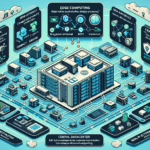Securing IT infrastructure for edge computing is critical as edge environments are often more vulnerable due to their distributed nature, limited physical security, and diverse endpoints. Below are best practices and strategies to secure your edge computing infrastructure:
1. Implement Strong Network Security
- Secure Communication Channels: Use VPNs, TLS encryption, or IPsec to secure communication between edge devices, data centers, and cloud platforms.
- Zero Trust Architecture: Adopt a Zero Trust model where all devices, users, and applications must authenticate and be verified.
- Segment Networks: Utilize VLANs and microsegmentation to isolate edge devices and prevent lateral movement during a breach.
- Firewall Configuration: Deploy firewalls at edge locations to monitor and block unauthorized traffic.
2. Harden Edge Devices
- Device Authentication: Ensure all edge devices are authenticated before connecting to your network using certificates or secure tokens.
- Secure Firmware: Regularly update firmware and software to patch vulnerabilities and prevent exploitation.
- Access Control: Limit administrative access to edge devices, enforce least privilege, and use multi-factor authentication (MFA) for management interfaces.
- Disable Unused Features: Turn off unnecessary services, ports, and protocols to reduce the attack surface.
3. Data Protection
- Encrypt Data: Encrypt data both at rest and in transit to prevent unauthorized access.
- Minimize Data Exposure: Only collect and store the data necessary for edge operations. Avoid sending sensitive data unless absolutely required.
- Data Integrity: Implement checksums and digital signatures to ensure data integrity during transmission.
4. Physical Security
- Secure Locations: Protect physical access to edge devices with locks, surveillance cameras, and restricted access zones.
- Tamper Detection: Use tamper-proof hardware or mechanisms that trigger alerts if devices are compromised physically.
- Environmental Monitoring: Monitor environmental factors like temperature, humidity, or power fluctuations to ensure hardware integrity.
5. Endpoint Security
- Install Endpoint Protection: Deploy endpoint detection and response (EDR) tools on edge devices to monitor and mitigate threats in real time.
- Anti-Malware: Use advanced anti-virus and anti-malware solutions tailored for edge environments.
- Patch Management: Automate patching processes to ensure edge devices are updated against vulnerabilities.
6. Backup and Disaster Recovery
- Local Backups: Store backups locally at the edge for quick recovery during outages or attacks.
- Centralized Backup: Replicate critical data to a centralized data center or cloud for additional redundancy.
- Disaster Recovery Plan: Develop a DR plan specifically for edge devices, considering their remote and distributed nature.
7. Secure Kubernetes and Containers at Edge
If edge computing relies on Kubernetes or containerized workloads:
– Role-Based Access Control (RBAC): Enforce strict RBAC policies to manage user access.
– Namespace Isolation: Separate workloads into namespaces to prevent cross-application compromise.
– Image Security: Scan container images for vulnerabilities before deployment.
– Secrets Management: Use tools like HashiCorp Vault or Kubernetes Secrets to manage sensitive data securely.
8. AI and GPU Security at the Edge
If edge devices are running AI models or using GPUs:
– Model Protection: Encrypt AI models to prevent theft or reverse engineering.
– Secure AI Pipelines: Protect the AI inference pipeline by using secure APIs and restricting input sources.
– GPU Isolation: Use virtualization tools (e.g., NVIDIA vGPU) to isolate workloads and prevent unauthorized access to GPU resources.
9. Monitoring and Threat Detection
- Centralized Monitoring: Use tools like SIEM (Security Information and Event Management) to aggregate logs and monitor edge devices centrally.
- Anomaly Detection: Leverage AI-driven anomaly detection systems to identify unusual activity at the edge.
- Threat Intelligence: Integrate threat intelligence feeds to identify and mitigate emerging threats.
10. Regulatory Compliance
- GDPR, HIPAA, etc.: Ensure edge devices and data comply with relevant regulations for your industry.
- Audit Trails: Maintain logs for compliance audits and forensic investigations.
11. Automation and Orchestration
- Automate Security Policies: Use tools like Ansible, Puppet, or Terraform to enforce security configurations across edge environments.
- Edge Device Orchestration: Utilize orchestration platforms to maintain consistent security policies across distributed edge devices.
12. Regular Security Assessments
- Penetration Testing: Conduct regular penetration testing on edge infrastructure to identify vulnerabilities.
- Vulnerability Scanning: Use tools like Nessus or Qualys to scan edge devices for weak points.
- Risk Assessments: Periodically evaluate the risks associated with edge devices and update your security posture.
13. Secure Supply Chain
- Vendor Integrity: Work with trusted vendors for edge hardware and software procurement.
- Hardware Authentication: Use hardware with secure boot and trusted execution environments (TEE) to prevent supply chain attacks.
14. Incident Response
- Edge-Specific Playbooks: Develop incident response playbooks tailored for edge scenarios.
- Remote Management: Ensure you can remotely isolate or shut down compromised edge devices to contain threats.
By implementing these practices, you can build a robust security framework that protects your edge computing infrastructure while ensuring reliable operations and regulatory compliance.



